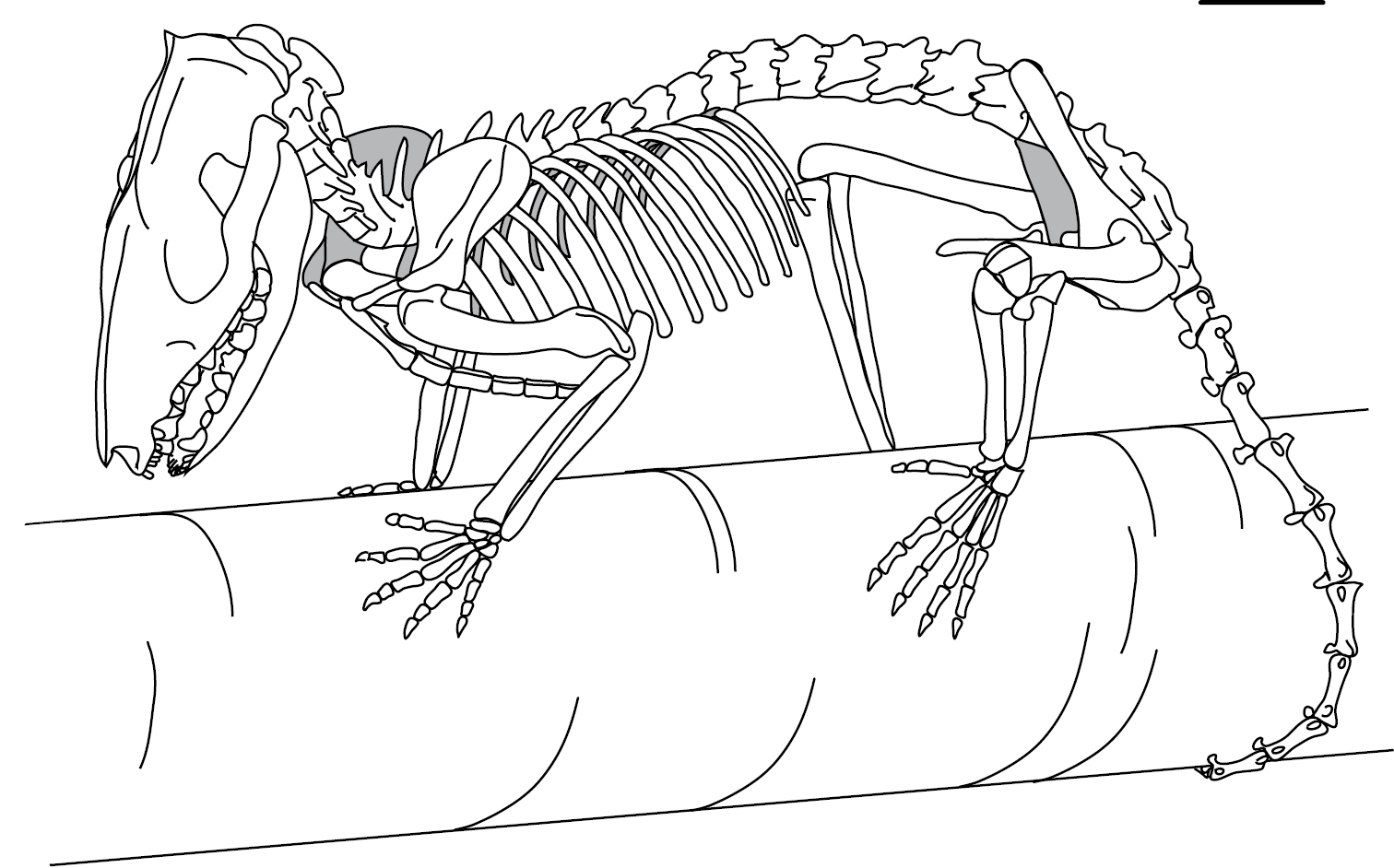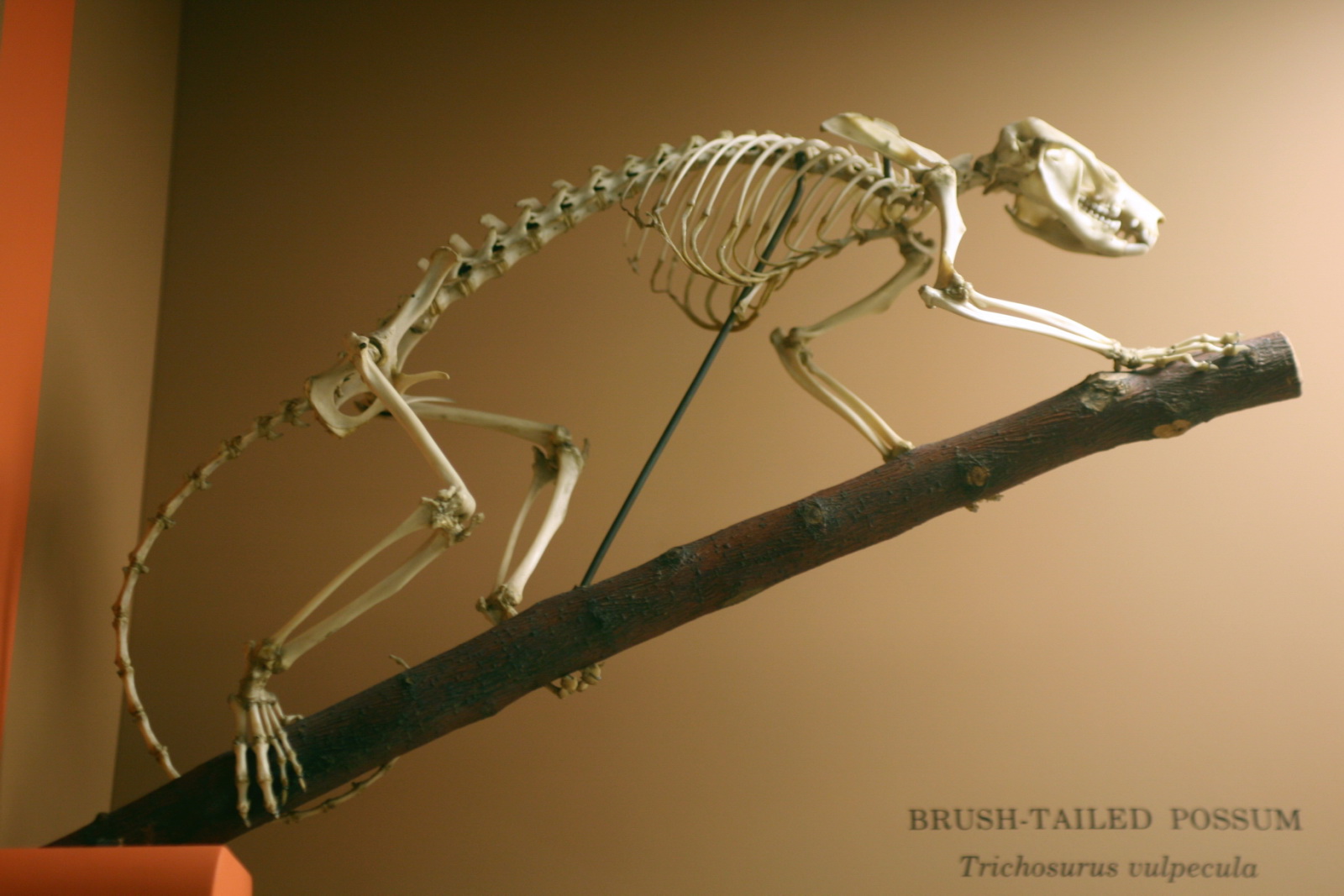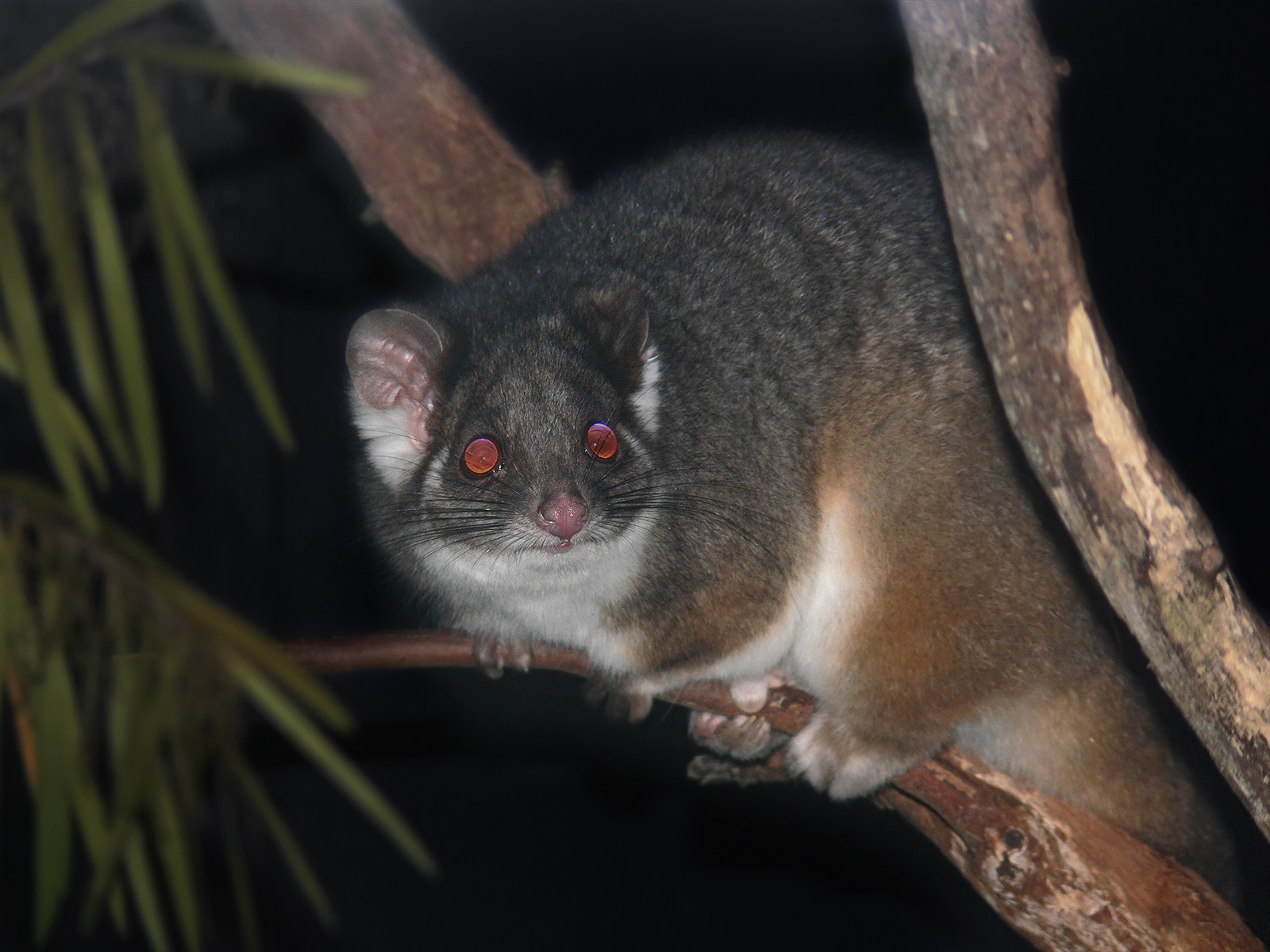|
Phalangeriformes
Phalangeriformes is a paraphyletic suborder of about 70 species of small to medium-sized arboreal locomotion, arboreal marsupials native to Australia, New Guinea, and Sulawesi. The species are commonly known as possums, opossums, gliders, and cuscus. The common name "(o)possum" for various Phalangeriformes species derives from the creatures' resemblance to the opossums of the Americas (the term comes from Powhatan language ''aposoum'' "white animal", from proto-Algonquian language, Proto-Algonquian *''wa·p-aʔɬemwa'' "white dog"). However, although opossums are also marsupials, Australasian possums are more closely related to other Australidelphia, Australasian marsupials such as kangaroos. Phalangeriformes are quadrupedalism, quadrupedal Diprotodontia, diprotodont marsupials with long tails. The smallest species, indeed the smallest diprotodont marsupial, is the Tasmanian pygmy possum, with an adult head-body length of and a weight of . The largest are the two species of be ... [...More Info...] [...Related Items...] OR: [Wikipedia] [Google] [Baidu] |
Diprotodontia
Diprotodontia (, from Greek language, Greek "two forward teeth") is the largest extant order (biology), order of marsupials, with about 155 species, including the kangaroos, Wallaby, wallabies, Phalangeriformes, possums, koala, wombats, and many others. Extinct diprotodonts include the hippopotamus-sized ''Diprotodon'', and ''Thylacoleo'', the so-called "marsupial lion". Characteristics Living diprotodonts are almost all herbivores, as were most of those that are now extinct. A few insectivore, insectivorous and omnivore, omnivorous diprotodonts are known, and the Potoroidae are almost unique among vertebrates in being largely Fungivore, fungivorous, but these seem to have arisen as relatively recent adaptations from the mainstream herbivorous lifestyle. The extinct Thylacoleonidae, thylacoleonids ("marsupial lions") are the only known group to have exhibited Carnivore, carnivory on a large scale. Diprotodonts are restricted to Australasia. The earliest known fossils date to th ... [...More Info...] [...Related Items...] OR: [Wikipedia] [Google] [Baidu] |
Marsupial
Marsupials are a diverse group of mammals belonging to the infraclass Marsupialia. They are natively found in Australasia, Wallacea, and the Americas. One of marsupials' unique features is their reproductive strategy: the young are born in a relatively undeveloped state and then nurtured within a pouch on their mother's abdomen. Extant marsupials encompass many species, including Kangaroo, kangaroos, Koala, koalas, Opossum, opossums, Phalangeriformes, possums, Tasmanian devil, Tasmanian devils, Wombat, wombats, Wallaby, wallabies, and Bandicoot, bandicoots. Marsupials constitute a clade stemming from the last common ancestor of extant Metatheria, which encompasses all mammals more closely related to marsupials than to Placentalia, placentals. The evolutionary split between placentals and marsupials occurred 125-160 million years ago, in the Middle Jurassic-Early Cretaceous period. Presently, close to 70% of the 334 extant marsupial species are concentrated on the Australian ... [...More Info...] [...Related Items...] OR: [Wikipedia] [Google] [Baidu] |
Opossum
Opossums () are members of the marsupial order Didelphimorphia () endemic to the Americas. The largest order of marsupials in the Western Hemisphere, it comprises 126 species in 18 genera. Opossums originated in South America and entered North America in the Great American Interchange following the connection of North and South America in the late Cenozoic. The Virginia opossum is the only species found in the United States and Canada. It is often simply referred to as an opossum; in North America, it is commonly referred to as a possum (; sometimes rendered as ''possum'' in written form to indicate the dropped "o"). The Australasian arboreal marsupials of suborder Phalangeriformes are also called possums because of their resemblance to opossums, but they belong to a different order. The opossum is typically a nonaggressive animal and almost never carries the virus that causes rabies. Etymology The word ''opossum'' is derived from the Powhatan language and was first recorde ... [...More Info...] [...Related Items...] OR: [Wikipedia] [Google] [Baidu] |
Common Brushtail Possum
The common brushtail possum (''Trichosurus vulpecula'', from the Ancient Greek, Greek for "furry tailed" and the Latin for "little fox", previously in the genus ''Phalangista'') is a nocturnal, semiarboreal marsupial of the family Phalangeridae, native to Australia and Invasive species, invasive in New Zealand, and the second-largest of the Phalangeriformes, possums. Like most possums, the common brushtail possum is nocturnal. It is mainly a folivore, but has been known to eat small mammals such as rats. In most Australian habitats, eucalyptus leaves are a significant part of the diet, but rarely the sole item eaten. Its tail is Prehensile tail, prehensile and naked on its lower underside. The four colour variations are silver-grey, brown, black, and gold. It is the Australian marsupial most often seen by city dwellers, as it is one of few that thrive in cities and a wide range of natural and human-modified environments. Around human habitations, common brushtails are inventive ... [...More Info...] [...Related Items...] OR: [Wikipedia] [Google] [Baidu] |
Phalangeridae
The Phalangeridae are a family of mostly nocturnal marsupials native to Australia, New Guinea, and Eastern Indonesia, including the cuscuses, brushtail possums, and their close relatives. Considered a type of possum, most species are arboreal, and they inhabit a wide range of forest habitats from alpine woodland to eucalypt forest and tropical jungle. Many species have been introduced to various non-native habitats by humans for thousands of years. Characteristics Phalangerids are relatively large, compared with other possums. The smallest species, the Sulawesi dwarf cuscus, is cat-sized, averaging in length, while the largest, the black-spotted cuscus, is around long, and weighs . Besides the large size, other key features distinguishing phalangerids from other possums include the presence of bare skin on at least part of the tail, and low-crowned molar teeth. They have claws on the fore feet, but none on the hind feet, although these do have an opposable first toe to help ... [...More Info...] [...Related Items...] OR: [Wikipedia] [Google] [Baidu] |
Tasmanian Pygmy Possum
The Tasmanian pygmy possum (''Cercartetus lepidus''), also known as the little pygmy possum or tiny pygmy possum, is the world's smallest possum. It was first described by Oldfield Thomas in 1888, after he identified that a museum specimen labelled as an eastern pygmy possum in fact represented a species then unknown to science. The holotype resides in the Natural History Museum in London. Description Although it is a marsupial, the Tasmanian pygmy possum superficially resembles a dormouse, and it is the smallest of all the known species of possum. Adults range from in head-body length, with a tail, and weigh just . Their fur is soft and thick, and is fawn in colour over most of the body, fading to a pale grey on the underparts. The snout is short with long whiskers, and the eyes are directed forwards and surrounded by slightly darker fur, although without the conspicuous black rings seen on other pygmy possums. The ears are mobile and largely hairless. The tail is prehensile ... [...More Info...] [...Related Items...] OR: [Wikipedia] [Google] [Baidu] |
Macropodiformes
The Macropodiformes , also known as macropods, are one of the three suborders of the large marsupial order Diprotodontia. They may in fact be nested within one of the suborders, Phalangeriformes. Kangaroos, wallabies and allies, bettongs, potoroos and rat kangaroos are all members of this suborder. Classification * Superfamily Macropodoidea **Family † Balbaridae: (basal quadrupedal kangaroos) *** Genus †'' Galanarla'' *** Genus †'' Nambaroo'' *** Genus †'' Wururoo'' *** Genus †'' Ganawamaya'' *** Genus †'' Balbaroo'' ** Family Hypsiprymnodontidae: ( musky rat-kangaroo) *** Subfamily Hypsiprymnodontinae **** Genus '' Hypsiprymnodon'' ***** Musky rat-kangaroo, ''Hypsiprymnodon moschatus'' *****†'' Hypsiprymnodon bartholomaii'' *****†'' Hypsiprymnodon philcreaseri'' *****†'' Hypsiprymnodon dennisi'' *****†'' Hypsiprymnodon karenblackae'' *** Subfamily † Propleopinae **** Genus †'' Ekaltadeta'' *****†'' Ekaltadeta ima'' *****†'' Ekaltad ... [...More Info...] [...Related Items...] OR: [Wikipedia] [Google] [Baidu] |
New Guinea
New Guinea (; Hiri Motu: ''Niu Gini''; , fossilized , also known as Papua or historically ) is the List of islands by area, world's second-largest island, with an area of . Located in Melanesia in the southwestern Pacific Ocean, the island is separated from Mainland Australia, Australia by the wide Torres Strait, though both landmasses lie on the same continental shelf, and were united during episodes of low sea level in the Pleistocene glaciations as the combined landmass of Sahul. Numerous smaller islands are located to the west and east. The island's name was given by Spanish explorer Yñigo Ortiz de Retez during his maritime expedition of 1545 due to the perceived resemblance of the indigenous peoples of the island to those in the Guinea (region), African region of Guinea. The eastern half of the island is the major land mass of the nation of Papua New Guinea. The western half, known as Western New Guinea, forms a part of Indonesia and is organized as the provinces of Pap ... [...More Info...] [...Related Items...] OR: [Wikipedia] [Google] [Baidu] |
Ektopodontidae
''Ektopodon'' is an extinct genus of marsupial, and is the type genus of the family Ektopodontidae which occurred in forested environments in South Australia, Queensland and Victoria. The last species of this group went extinct in the early Pleistocene (between 2.588 million years ago and 781,000 years ago). Its body mass was estimated around 1300 grams. Scientists believe that ektopodontids were highly specialised seed-eating possums The type species ''Ektopodon serratus'' describes material excavated at the Lake Ngapakaldi __NOTOC__ The Lake Ngapakaldi to Lake Palankarinna Fossil Area is a group of fossil sites located in the Australian state of South Australia within the Tirari Desert in the north-eastern part of the state's Far North (South Australia), Far Nort ... fossil site in South Australia. Taxonomy The genus ''Ektopodon'', now extinct, was a group of marsupials that once inhabited the forests of South Australia, Queensland, and Victoria. Classified under the fami ... [...More Info...] [...Related Items...] OR: [Wikipedia] [Google] [Baidu] |
Burramyidae
The pygmy possums are a family of small possums that together form the marsupial family Burramyidae. The five extant species of pygmy possum are grouped into two genera. Four of the species are endemic to Australia, with one species also co-occurring in Papua New Guinea and Indonesia. Pygmy possums range in length from about , and usually weigh between . They are nocturnal and omnivorous, living on a diet of invertebrates, fruit, seed, nectar and pollen. They are excellent climbers, due in part to their prehensile tails. Although they cannot glide like some possums, some species can leap long distances. They have a prehensile tail for grabbing branches, but spend most of their time on the ground. Conservation International (CI) and the Indonesian Institute of Sciences (LIPI) reported the possible discovery of a new species of ''Cercartetus'' pygmy possum upon visit to the Foja Mountains in June 2007. The mountain pygmy possum is the only mammal restricted to the alpine and su ... [...More Info...] [...Related Items...] OR: [Wikipedia] [Google] [Baidu] |
Petauroidea
Petauroidea is a superfamily of marsupials from Australia and New Guinea. It is part of the suborder Phalangeriformes within the order Diprotodontia, which also includes, among others, wombats, kangaroos, cuscuses. The superfamily Phalangeroidea, including cuscuses and brushtail possums (family Phalangeridae) and pygmy possums (family Burramyidae), is the immediate sister group of the Petauroidea. The earliest fossils from this superfamily are from the Oligocene of the Geilston Bay fossil site in Tasmania. Species The superfamily includes the following recent species: *Superfamily Petauroidea ** Family Pseudocheiridae *** Subfamily Hemibelideinae **** Genus '' Hemibelideus'' ***** Lemur-like ringtail possum, ''Hemibelideus lemuroides'' **** Genus '' Petauroides'' ***** Central greater glider, ''Petauroides armillatus'' ***** Northern greater glider, ''Petauroides minor'' ***** Southern greater glider, ''Petauroides volans'' *** Subfamily Pseudocheirinae **** Genus '' ... [...More Info...] [...Related Items...] OR: [Wikipedia] [Google] [Baidu] |
Pseudocheiridae
Pseudocheiridae is a family of arboreal marsupials containing 17 extant species of ringtailed possums and close relatives. They are found in forested areas and shrublands throughout Australia and New Guinea. Characteristics Physically, they appear very similar to the pygmy possums, except for their greater size. Even so, they are relatively small animals, with the largest being cat-sized, and they weigh between 200 grams and 2 kilograms. They have grasping hands and feet with opposable first toes on their hindfeet, and, in all species save the greater glider, a prehensile tail. They are nocturnal, with large eyes. All species feed almost entirely on leaves. To enable them to digest this tough and fibrous food, they have an enlarged cecum containing fermenting bacteria, and, like rabbits, they are coprophagous, passing food through their digestive tracts twice. Their teeth include a battery of grinding molars, and they lack lower canines. Their dental formula is: Most ... [...More Info...] [...Related Items...] OR: [Wikipedia] [Google] [Baidu] |





